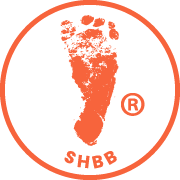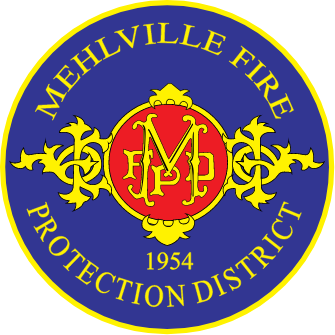Join Us in Observing American Heart Month: Prioritize Heart Health Today
Every year February is designated as American Heart Month. It is time set aside to bring attention to heart disease, the nation’s leading cause of death, and ways to live a more heart healthy lifestyle. It’s also the perfect time to learn how to save a loved one’s life in the event of a heart attack or a cardiac arrest.
In 1955 President Dwight Eisenhower had a heart attack that led to increased awareness about heart health. This culminated in 1963 when American Heart Month was started with a proclamation from President Lyndon B Johnson.
The goals of American Heart Month were to encourage people to learn about heart disease and ways to adapt a healthy lifestyle to prevent it.
Understanding Heart Disease:
Heart disease, also known as cardiovascular disease, refers to conditions that affect the heart or the blood vessels, or both. These conditions damage the heart muscle or the vessels and impair the heart’s ability to pump blood throughout the body effectively.
Heart disease is the leading cause of death in the United States, killing more than 700,000 people every year.
The most common risk factors for heart disease are high blood pressure, high cholesterol, smoking, obesity and diabetes. Nearly half of all American adults have at least one of these risk factors present.
The good news is heart disease can often be preventable through lifestyle changes like eating healthy foods and getting exercise.
Preventative Measures for a Healthy Heart:
You can help prevent heart disease by adopting a heart healthy lifestyle. While you can’t change some risk factors like your family history, there are a lot of other ways you can lower your risk of heart disease.
Don’t Use Tobacco
One of the best things you can do to improve your heart health is to avoid or stop using tobacco products. Research has shown there are chemicals in tobacco products that damage the heart and blood vessels.
The good news is your risk of heart disease starts dropping just a day after you quit, and after a year your risk of heart disease drops to about half of that of a smoker.
Move Your Body
Daily physical activity lowers your risk of heart disease ( and controls your weight ). It also helps mitigate the other risk factors like high blood pressure diabetes and high cholesterol. you should aim for 30 to 60 minutes of daily activity.
It’s okay to start slow and build up to optimum levels of activity, and if you already have heart disease you should consult your doctor before beginning an exercise program.
Avoid Stress
Easier said than done, right? But ongoing stress raises your blood pressure, not to mention the other risk factors for heart disease. People also tend to cope with stress in unhealthy ways, like smoking or drinking alcohol.
Physical activity is a better way to manage stress along with mindfulness and meditation.
If you take a healthy approach to reducing stress and you still have trouble eliminating it, it may be advisable to talk to your doctor to make sure nothing else is going on, either mentally or physically.
Eat Heart Healthy
Eating a healthy diet can help reduce all of the risk factors for heart disease. If you are going to make an effort to eat healthier, you want to make sure you’re food plan includes the following:
- Vegetables and fruits
- Beans
- Lean meat and fish
- Low-fat or fat-free dairy foods
- Whole grains
- Healthy fats such as olive oil and avocado
And avoids the following:
- Sodium
- Sugar or sweetened beverages
- Highly refined carbohydrates
- Alcohol
- Highly processed food, such as processed meats.
- Saturated fat, which is found in red meat, full-fat dairy products, palm oil and coconut oil
- Trans fat, which is found in some fried fast food, chips and baked goods
Your doctor, a nutritionist, or even online research from a reputable source can help point you in the right direction.
Maintain a Healthy Weight
The higher the circumference of your waist, the higher your risk for heart disease. Being overweight, especially around the belly area, puts you more at risk for all the complications that lead to heart disease–high blood pressure, high cholesterol, type 2 diabetes.
The good news is even small amounts of weight loss can help. A 3% to 5% weight loss will start lowering your blood sugar and cutting your risk of type 2 diabetes, for example.
Sleep!
If you don’t get enough sleep, you’re at a higher risk for obesity, high blood pressure and heart attacks, diabetes, and even depression. A good rule of thumb is that most people need at least seven hours of sleep each night.
The best way to make sure you get enough sleep is to set a schedule, and stick to it. Go to bed and wake up at the same time each day. It also helps to make sure your bedroom is dark and quiet.
Learn to Save a Life
Every year more than 350,000 cardiac arrests happen outside of hospitals. CPR When performed quickly can double or even triple a patient’s chance of surviving cardiac arrest.
While First Responders are highly trained and save lives every day, a victim of a sudden cardiac arrest needs immediate assistance while waiting for first responders to arrive.
Unfortunately only about 40% of these victims get the help they need before the professionals arrive. In other words, many victims of sudden cardiac arrest could have had better outcomes if they were surrounded by people trained to save their lives.
American Heart Month is a perfect time to get trained in CPR so that you’re ready to save the life of a friend, loved one, or even a stranger should a sudden cardiac arrest occur.
Conclusion:
Mehlville Fire Protection District’s EMTs hold advanced cardiac life support (ACLS) certification and know the proper life-saving techniques for cardiac distress, heart attacks, and cardiac arrest. Our crews and medical first responders are here to help our residents during these crises.
During American Heart Month, we want everyone to learn how to control their heart health and stay healthy. Learn the warning signs of a heart attack, and always call 911 when a heart attack or stroke is suspected.

